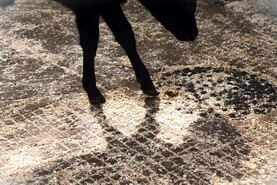The positive vibes from the beef, sheep and dairy markets means farmer sentiment is good as we face into another spring calving season. Whether this translates into higher calf prices remains to be seen.
Most dairy farmers will be happy to see a strong demand for calves and should be content to sell calves at a price that covers their own costs and allows the beef farmer buying them to make a profit.
The last thing the sector needs is to have potential buyers priced out of the market – this isn’t good for dairy farmers or beef farmers.
Remember, calves purchased this spring won’t be killed for the best part of two years, so who knows what beef prices will be like then.
In the first instalment of our two-part calf focus, we take a look at the different options available for feeding calves this spring.
There is a lot of interest in computerised calf feeders, but are they the best option for all farmers? See more on here.
This week, we take a look at milk replacer costs this spring. Like with most other inputs, costs have risen by almost 20% over the past year.
Speaking of costs, Declan Marren goes through all the costs involved in rearing a calf.
We take a look at some of the key features to keep in mind when planning a new calf shed and discuss important matters such as ventilation, drainage and appropriate location.
Shane Murphy outlines some of the key trends in calf breeds over the last decade. What breeds are growing and what breeds are declining?
Finally, I would like to wish all of our readers a safe calving season. Whether you’re calving the cow or rearing the calf, it’s a busy time of year. Don’t forget to eat well and sleep well. We will have part two of this focus in next week's Irish Farmers Journal.






 This is a subscriber-only article
This is a subscriber-only article











SHARING OPTIONS: